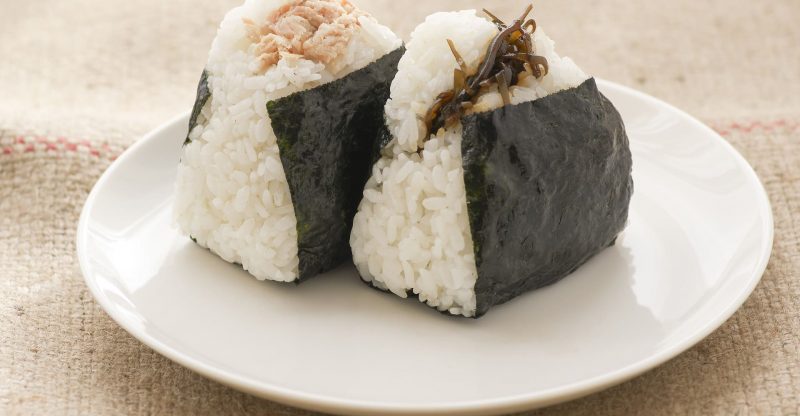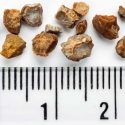What is Sodium Acetate Trihydrate and Anhydrous (E262i) in Food and Uses?

Production | Uses | Safety | FAQs
Sodium acetate or sodium ethanoate, the sodium salt of acetic acid with the chemical formula CH3COONa, which occurs as anhydrous or trihydrate with the European food additive number E262(i). Generally, this ingredient is used to enhance sour taste, adjust PH, and for preservation in food.
How is Sodium Acetate made?
It is a synthetic salt derived from acetic acid, although it occurs naturally in plant and animal tissues. The production of commercial food grade sodium acetate is mainly with the following two ways:
- Neutralization acetic acid with sodium carbonate. Equation: CH3COOH + NaHCO3 → CH3COONa + H2O + CO2
- Reaction calcium acetate with sodium sulfate and sodium bicarbonate. Equation: (CH3COO)2Ca + Na2SO4 → CH3COONa + CaSO4
Then follow the process of concentration, cooling and crystallization to obtain sodium acetate trihydrate.
Sodium acetate trihydrate (transparent crystalline powder or granular with a faint acetic odour) needs to be melted again to produce sodium acetate anhydrous (white hygroscopic powder or granular), and with the process such as centrifugation, drying and crystallization. (1)
Acetic acid will be obtained if hydrochloric acid is added to the sodium acetate solution. The following is the equation: CH3COONa + HCl = CH3COOH + NaCl
Specification
| CAS number | 127-09-3 (Anhydrous), 6131-90-4 (Trihydrate) |
| Chemical formula | C2H3NaO2·nH2O (n = 0 or 3) |
| Molecular weight | 82.03 (Anhydrous), 136.08 (Trihydrate) |
| PH | It is weak alkali with the PH value 8.0-9.5 (1 % aqueous solution) |
| PKa | 4.75 |
| PKb | 9.25 |
| Melting point | 58 °C (Trihydrate) |
| Solubility | Very soluble in water 20°C, solubility: 46.5g/100ml (trihydrate), 50g/100ml (anhydrous ).
Soluble in ethanol. |
What’re the Uses of Sodium Acetate?
Sodium acetate is a multifunctional ingredient that can be used in food, medicine, DNA isolation, printing and dyeing, photography, electroplating, tanning, rubber, and etc.
Let’s see some of its applications:
Food
This ingredient can be found in salad dressing, sauce, dumpling, sausage, steamed fish paste, bread and rice cake.
There are general three purposes of sodium acetate in food:
- PH regulator or a buffer: maintain a specific pH content in food when used together with acetic acid and sometimes in the form of sodium diacetate, which is a molar ratio of 1:1 sodium acetate and acetic acid.
- Preservative: prevent microorganism cultivation.
- Taste improver: the combination of acetic acid to make the sour (vinegar) taste of acetic acid mild.
Medical use
It can be used as an electrolyte replenisher to prevent low levels of sodium in blood.
Meanwhile, sodium acetate trihydrate can be used in reusable heating pads and hand warmers as it contains three waters of crystallization, which will be released from the crystal if heated to its melting temperature – 58°C.
And then sodium acetate dissolves in three waters of crystallization and forms a supersaturated solution. Such solution (not stable) will not form crystals when cooled to room temperature, but can be crystallized again if with some method.
The process of crystallization is exothermic (emit heat) and this property can be utilized in hot packs and hand warmers.
DNA extraction/precipitation
Sodium acetate and ethanol are commonly added to extract nucleic acids (DNA or RNA) from aqueous solution.
Nucleic acids are polar and soluble in water. Sodium acetate is used to make the nucleic acids molecule insoluble in water by neutralizing the negative charges (PO3- groups) on the sugar phosphate backbone of nucleic acids with the dissociated sodium ions.
Compared with water, ethanol enables the interaction between Na+ and PO3- much easier, making nucleic acids precipitate out of solution.
Is Sodium Acetate Safe to Eat?
Yes, it almost has no side effects and the safety has been approved by the U.S. Food and Drug Administration (FDA) and European Food Safety Authority (EFSA), as well as the Joint FAO/WHO Expert Committee on Food Additives (JECFA).
FDA
Sodium acetate is a multi-functional ingredient generally recognized as safe (GRAS) that can be used as flavoring agent, adjuvant and pH control agent in food. The following food list may contain it and with the maximum usage (2):
- Grain products, pastas and snack foods 0.6%
- Fats and oils 0.5%
- Soft candy 0.2%
- Hard candy 0.15%
- Jams, jellies and meat products 0.12%
- Soups and soup mixes, sweet sauces 0.05%
- Breakfast cereals 0.007%
EFSA
Sodium acetate E262(i) is an authorised food additive in the European Union (EU) that belongs to “Additives other than colours and sweeteners” and is classified in “Group I”, which means it is approved to use in a lot of food categories with the maximum use level “quantum satis”. (3).
JECFA
Function Class: food additives, acidity regulator. (4)
Acceptable daily intake: ADI “not limited” set together with acetic acid and potassium acetate in 1973. (5)
Frequently asked questions
Is sodium acetate acid or base?
It is the strong conjugate base of acetic acid. When sodium acetate dissolves in water, it dissociates CH3COO- ions and Na+, and forms acetic acid (CH3COOH) and NaOH after these two ions reaction with water, CH3COO- combines with H+, and Na+ reacts with OH-, respectively.
Sodium acetate vs acetic acid?
Sodium acetate is obtained by replacing the hydroxyl hydrogen on acetic acid (CH3COOH) with a sodium atom.
Acetic acid is a liquid due to its lower melting point 16.6°C, compared with that of sodium acetate trihydrate 58 °C.
Why is it called hot ice?
The crystallization of sodium acetate is an exothermic process, which makes the crystallized ice hot.
Conclusion
Now you may have a knowledge of the acidity regulator – Sodium acetate (E262i), from the following aspects:
- Two types: Trihydrate and Anhydrous
- Manufacturing processes
- Uses in food, medical use and DNA precipitation
- Safety
- FAQs
What kinds of food labels have you found this ingredient in? Feel free to let me know in the comments.


